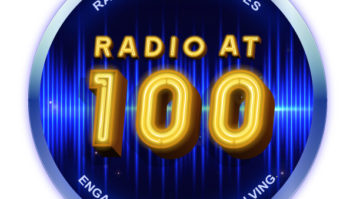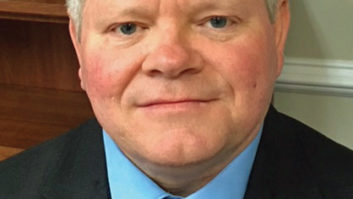Discussion of Terrestrial Radio Business Is Now Water-Cooler Talk at Places Other Than Stations
The changes that the U.S. radio broadcasting industry faces are now widely enough known that they have become fair game for the likes of the mainstream press and D.C. policy wonks. Much attention has been directed at what was considered a mature and stable industry that now faces dramatic upheaval.
One recent piece from a Washington think tank called The Progress & Freedom Foundation has an interesting take on what needs to happen for radio to weather its current crisis.
For those who care, PFF is a moderately conservative organization that focuses on media policy issues, and which is supported by a broad range of telecom and related companies (full disclosure: my employer is among them). Its views are generally non-extremist, insightful and pragmatic, and are respected across the political spectrum. If the group’s politics ever enter the picture, they usually come down as strongly pro-industry, mildly pro-consumer and anti-regulatory/interventionist.
This particular report, “The Future of Radio Regulation: The Need for a Level Playing Field,” is authored by Adam Thierer, formerly director of telecommunications studies at the Cato Institute, the leading voice of Libertarian politics in the country.
Outflanked
Thierer portrays the radio industry as a stalwart American institution now coming under siege.
He presents the case that radio seemed impervious to competition for so long, having spent its early years without any significant competition, and then surviving onslaughts from records, television, the Walkman and CDs. Yet today, he counters, radio is becoming outflanked by both the sheer number of emerging media alternatives, and the more specifically direct nature of their competitive services.
He cites Internet radio, music downloading and satellite radio as examples. Satellite radio presents the greatest threat, in Thierer’s view, particularly given its foray into provision of local content with traffic and weather offerings. He also makes a convincing argument that although satellite radio only reaches a fraction of free, over-the-air (OTA) terrestrial radio’s audience today, all indicators point toward continued strong growth in satellite radio’s subscriptions, and he presents a plausible future in which satellite radio overtakes OTA radio just as cable and satellite TV have done to OTA television broadcasting.
Tangentially, this also calls into question a point made by others that cable and satellite TV have reached their dominance coincidental to the period of OTA TV’s forced digital transition, significantly reducing the return on investment of OTA’s investment in digital conversion. Apply this to Thierer’s view of radio’s future, and it gives radio broadcasters some pause as they consider the costs of IBOC conversion.
Of course, the costs of doing so for radio are proportionally less than TV’s, and the transition is voluntary in radio’s case. Nevertheless, radio broadcasters may hold unrealistically high expectations for digital ROI if Thierer’s predictions come to pass.
Criticizing NAB’s solution
The main premise of the paper is, as the title suggests, the need for re-regulation of radio.
Thierer contends that radio is unfairly fettered by regulations that are no longer necessary in light of so much new competition, and that market forces should be used to set boundaries rather than regulatory mandates. Moreover, he argues that having radio be bound by its current regulations, from which its new competitors are largely exempt, creates an unlevel playing field.
He then cites the radio industry’s response, as presented by the NAB, as one in which the disparity is solved by “regulating up” the new competitors – specifically satellite radio, which NAB has called upon the FCC to further restrict in its moves toward addition of localized content. (This is what I would call leveling the playing field by tilting the grandstand.)
Thierer contends that this approach is short-sighted and dangerous, and instead advocates a solution that “deregulates down” OTA radio.
He enumerates the myriad regulations placed on OTA radio in the name of “public interest,” which involve content restrictions (e.g., indecent speech, political broadcasting, PSAs and community info obligations) as well as business practices (e.g., payola, ownership caps), arguing that it is easier to relax or remove these rules from an established, highly regulated business than it is to add new regulations to emerging, speculative businesses. He also points out that satellite radio might not be the only entity to provide competitive local service (e.g., wireless Internet providers could do the same or more in the near future), so a regulatory solution might soon run out of fingers to plug holes in the dike.
As another aside, note that Canadian radio broadcasters, who are subject to even more stringent and intrusive content regulations including the amount of Canadian-originated content they must play, their English/French language balance and even the amount of new releases vs. catalog content they can air, have cited the argument of leveling their playing field with new competition, as well. Some broadcasters there have recently called for this dereg-down approach in asking to be freed from these rules, at least for content broadcast on any new delivery formats (such as DAB).
Careful what you wish for
Thierer also cautions the NAB against possible unintended consequences of the regulate-up approach, since it would require broadcasters to rely heavily on the premise of localism.
Because the term is rather loosely defined and not uniformly (or in some cases, simply not) implemented today by radio broadcasters, any regulatory solution that protected broadcasters from local competition might very well set more specific requirements on how localism would have to be practiced by stations. Like an investor, if a regulator props up a threatened business, it may want more say on how the business runs thereafter.
So protectionism invites control, Thierer warns, and if local broadcasters are rewarded with regulation that guarantees them a monopoly on local content, they can expect even more intrusive micromanagement of content by the regulators in return. And beyond satellite radio’s current threat, this becomes a slippery slope, he contends, suggesting that each time another new-media entrant is rebuffed by regulation, OTA radio stations might face even more controls in return.
Instead, Thierer advocates removal of all content and business controls currently faced by broadcasters, although he acknowledges this as being a bit fanciful. He also echoes the point often made in this column that broadcasters must begin to separate their content and delivery businesses as a defense. But he ends with a disturbing hope that at least some regulatory change will occur before it is too late and the OTA radio broadcasting industry begins to fail.
Whatever your politics, the entire paper (16pp) is well worth a read by terrestrial broadcasters. Check it out at http://www.pff.org/issues-pubs/pops/pop12.27futureofradio.pdf
Write to Radio World with your comments about this or any article. E-mail [email protected].









